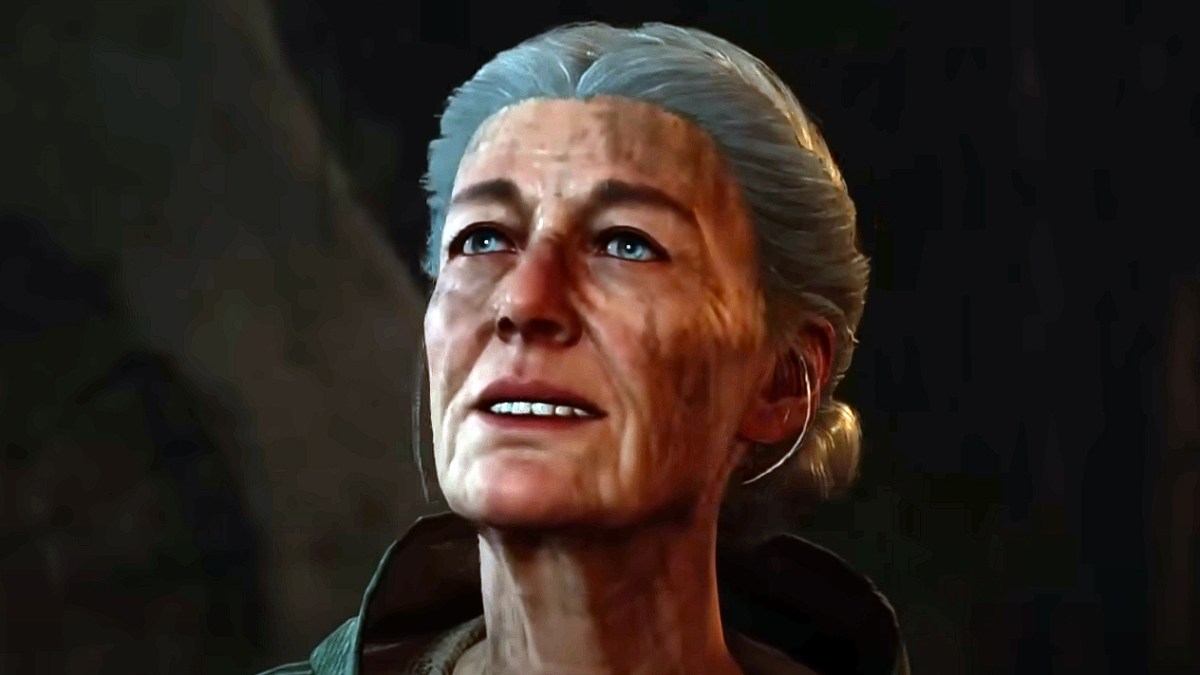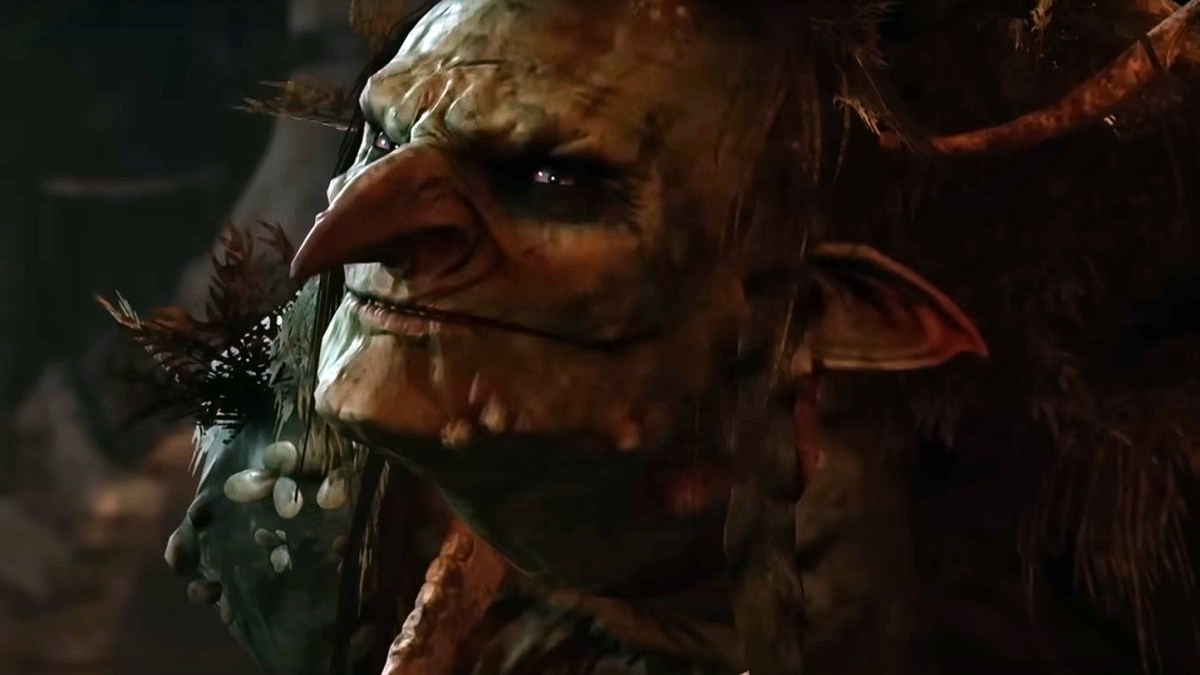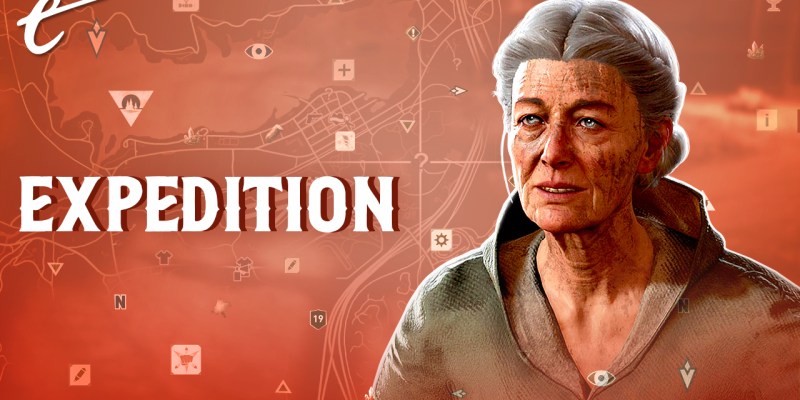The following explanation of why players should go to Auntie Ethel’s Teahouse contains minor spoilers for Act I of Baldur’s Gate 3.
The first Act of Baldur’s Gate 3 is ludicrously huge and a phenomenal intro to both Larian’s adaptation of the Dungeons and Dragons 5e rules and the corner of Faerûn the game inhabits. The continent itself has some rich history and super cool cities, but I was most excited to see what contents of the Monster Manual would be wreaking havoc on the land as I booted up the game for the first time. Act I alone features classic monsters, like a Gnoll pack, a mama Owlbear, and of course lots of Goblins and Ogres. However, the coolest encounter by far—at least of the ones I’ve played—is with the ray of sickness-slinging hag Auntie Ethel.
When you first encounter Ethel in the Druid’s Grove in Baldur’s Gate 3, she seems to be a kindly herbalist with potions to sell, but certain mage characters, Warlocks, will be able to get a whiff of her magical disguise. If you choose to check out the Sunlit Wetlands area before taking on the Goblin Camp, you’ll find Ethel confronted by two brothers who accuse her of kidnapping their sister Mayrina. Her sweet demeanor melts away quickly if you don’t back her up, and she teleports away on the spot—probably not worrying about up the charade since she doesn’t see your party as much of a threat. If you follow the brothers in their charge to the teahouse, you’ll realize that the wetlands aren’t just open for a pleasant marshy stroll. Hidden spike traps will punish you for rushing with bleeding, and then rotting wounds if you aren’t careful.
Related: Can You Change Your Race in Baldur’s Gate 3 (BG3)

If you’re perceptive enough, you can discover this region’s true nature early. The pristine landscape with lush plant life is actually a cover for a dank and thoroughly uninviting swamp, which definitely lowers the rating on the Yelp review I’m leaving for the Riverside Teahouse. A small group of cute sheep wandering around turn out to be Redcaps, bloodthirsty fey creatures that have a characteristic red hood. If you pause to explore or heal, you’ll later see that the brother’s quickly succumbed to their wounds before even crossing into the house’s front yard. The teahouse has a classic witch’s cottage feel, with a gnarled tree-trunk going through the center and a roaring stone fireplace lighting it up. If you’re brave enough to drink from the well outside, you actually get a health buff that helps out a ton for the chaos to come.
You encounter Mayrina—and finally the true Green Hag form of Ethel, when you barge in the teahouse. Charging in guns (or hand-crossbows) blazing was how I decided to go with my first character, but I missed some awesome dialogue that I checked out in my second playthrough. In classic hag fashion, Ethel offers to help with the tadpole ingrained in your head, but only if you let her pluck an eye from your skull. Not to get your hopes up if you thought this (pretty clearly bad) deal was an early solution, Ethel can’t do anything to help you, won’t give your peeper back after the procedure, and is frankly offended that you would even ask. If you want to roleplay as someone who trips over every trap, then this debuff is perfect.
If you try to intervene and save Mayrina, don’t expect a full drag-out boss fight to happen immediately. Ethel has actual self-preservation instincts and won’t just hang around to let you take her down to 0 HP. Her first move is to go invisible and sic Redcaps after you, and then she quickly retreats into her mysterious abode, teleporting Mayrina away as well. She completely tricked me the first time around, leaving me perplexed as to how I could follow her when she dove right into the fireplace and there were seemingly no other doors or paths outside the teahouse. After giving up and doing a little bit of goblin murder, I got close enough to the fireplace to trigger an investigation check—it was an illusion this whole time! The phony fireplace hid a staircase down to the hag’s cursed lair.
The first area is a display of Auntie Ethel’s previous victims. The hag heckles you one more time for daring to intrude, but quickly poofs away for you to regard the horrors. It’s basically a museum of bad deals, like a petrified dwarf who apparently begged Ethel to halt his terminal disease, or an elf in an alcove surrounded by mirrors and tortured with grisly visions because he wanted to see the future. This momentarily seems like a dead end, until you make out the shape of a face formed out of gnarled wood. The sealed-looking door is one of the hag’s victims as well, and begs you with visions of other failed attacks to discourage you from moving forward. A successful intelligence check reveals that this too is an illusion, and you can walk right through with no problem, but you can also put on Baldur’s Gate 3‘s Whispering Mask item to get through it. I thought I scored a fun accessory the first time I used it, but quickly realized that Auntie Ethel turns the wearer into a puppet if you keep it on, creating a fun forced PVP scrap.
The next encounter uses the whispering masks again to cool effect. You find yourself surrounded by adventurers trapped in Ethel’s lair. While she bids them to attack you, it becomes apparent your foes are actively resisting this, and may pause in the middle of the carnage to refuse if they succeed a save. This leads to an interesting degree of chance in this fight, with some run throughs being way harder than others for me. I also decided to try knocking these foes out, since they didn’t want to hurt me either. That goal reached a tragic end when I finally got everyone down, then saw that removing the masks caused their deaths anyway as their minds shattered from so many years of control. Continuing the trend of obscured ways to the next room, you move on by jumping through a waterfall to reveal a poison-clogged path ahead.
Related: Baldur’s Gate 3 and Starfield Are the Two Extremes of RPG Storytelling

There may be a way to completely avoid damage that hasn’t come to mind for me here, but I’m pretty sure you just have to let your characters suffer through this part. But if you just run through the poison blindly, you’ll get tripped by even more hidden traps, now in the form of flaming flowers that’ll cause a chain explosion when mixed with the noxious fumes. It’s funny trying to play this area strategically, and I admit I reset a few times when attempts snowballed out of control and my screen was suddenly filled with fire and carnage. But if I’m a hag who can teleport anywhere in my lair, why not fill a room with unavoidable toxic clouds that require an astronomically high Sleight of Hand check to get rid of just one?
After stumbling through this trap area and probably taking a short rest in the middle of the cave, you get to the final fight with Auntie Ethel. Mayrina is trapped in a wood cage over a chasm, which Ethel sets ablaze before turning into multiple copies. Her doubles die after one hit, but they can all sling vile Rays of Sickness or paralyze your party members with Hold Person. It’s easy for the tides to turn quickly in this fight if you don’t dispatch those copies, even if you’re lucky and hit the real Ethel early. Her high armor class challenges you to explore other ways to damage besides direct attack rolls, like spells that blast an area or rebuke abilities that let you hit enemies back. Mayrina’s burning cage also adds a tense secondary challenge to the fight. My first time playing this fight, I saved Mayrina in a pretty convoluted method, by dashing around the arena to the open side, and lashing out a Thorn Whip spell to pull her out. I later realized while replaying how many simpler solutions there were, like just lobbing a water bottle or ray of frost spell up there to douse the flames.
Auntie Ethel’s fight is so fun because of the focus on misdirection, and not just pure terrifying damage numbers, that was implemented here. Along with her invisibility and doppelgangers (which come back if you don’t get her down soon enough, by the way), she’ll also pull an oh so dastardly move if you save Mayrina. Ethel takes on her form while also shifting both of their spots in the arena, leaving you to determine which one is the hag, and which is the human with only a few hit points. I’ve done this by making wild guesses with an unarmed strike attack, but in another run, I realized that the real Mayrina still had the “Wet” condition after I put out the cage fire with a Create Water spell.
When I cut Ethel down in my first run of the quest in Baldur’s Gate 3, I was expecting praise (and maybe a reward) from Mayrina, but she immediately chewed me out for ruining her deal. It’s an emotional gut punch after such a tough journey to free this stranger, with Mayrina revealing that she was to give her coming baby to the hag so she could resurrect her husband Connor and go back to their old life. It’s a brutal moment, but you hear her pain and desperation as she says the hag would have given her baby a better life than she could ever manage. Mayrina leaves you to loot Ethel’s quarters as she mourns Connor’s corpse out in the bog. There are tons of spoils for you to plunder, but be careful with the rows of potions that have names like “Wilted Dreams” and “Butterflies in the Stomach.” I casually chugged one of them, and later realized I had gotten a permanent -1 to my strength. That one’s on me I suppose.
Auntie Ethel has one final, cruel trick for Mayrina if you talk to her outside with the hag’s wand in your possession. You see how Ethel’s end of the deal would have played out when the wand… sort of revives Connor, as a flesh-rotted zombie and not his former, I assume lovely self. You can either send Mayrina away with the wand, hoping she can find someone in Baldur’s Gate to turn her husband back, kill the zombie, or take the wand for yourself and have a new undead, freshly-single thrall. Not only does this side story do great justice to an incredible being from D&D campaigns and fairy tales with excellent writing of Ethel’s dialogue and a beautifully-uninviting dungeon to explore, it made me feel for her victims that sought out her ancient power to try and right the variety of wrongs in their lives.
